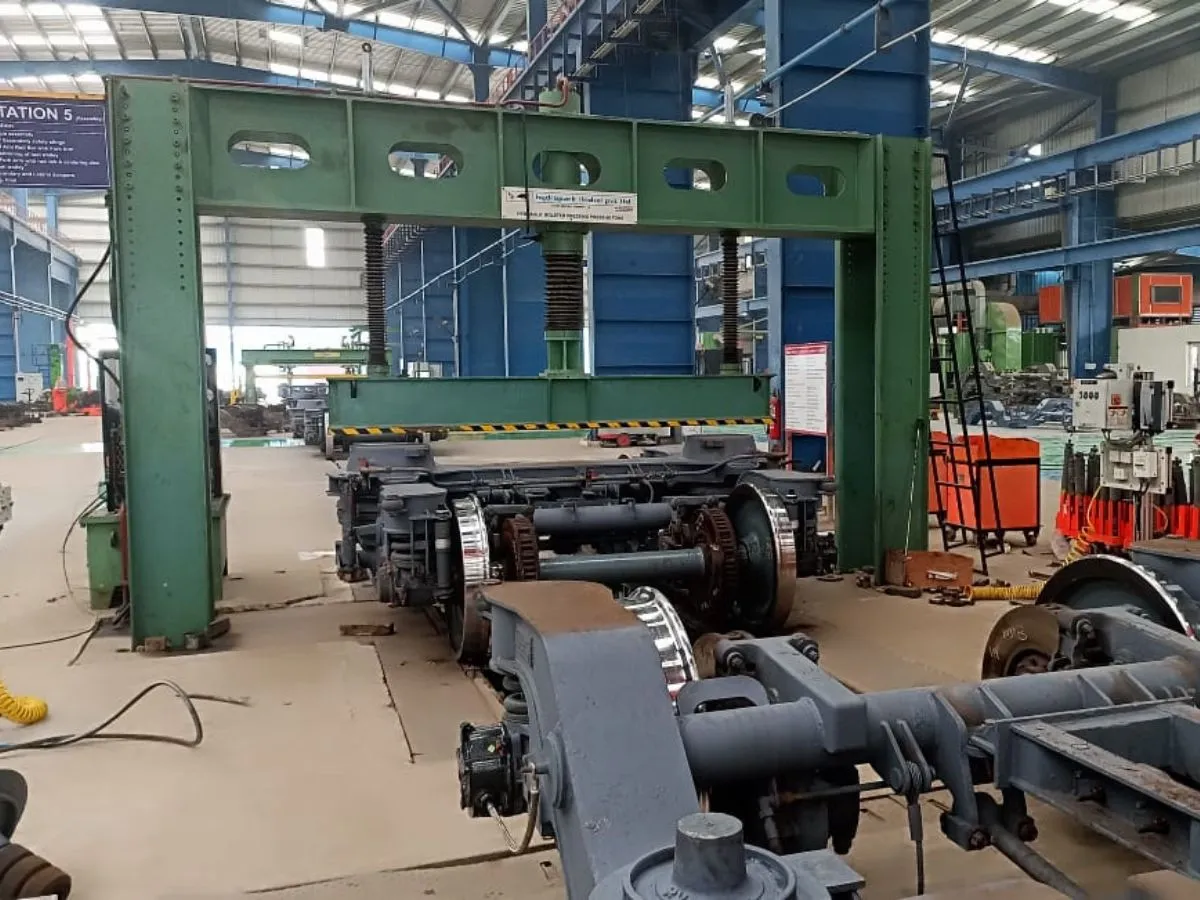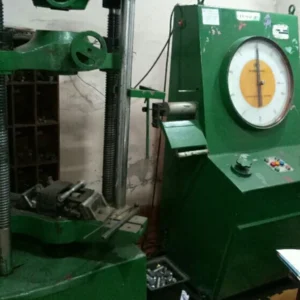Bogie Loading and Test Press, a piece of specialized equipment in the railway industry, It is used to simulate and test bogies. Bogies are the frames or chassis underneath rail vehicles such as trains. The following are details, features, and technical specifications of this product, as well as a description of its operating cycle
Details and Features
- The purpose is to simulate dynamic loads that bogies experience during operation and evaluate their structural integrity and performance.
- Design: is a design that consists of a sturdy frame structure and hydraulic or mechanical load systems capable of applying controlled forces to the bogie being tested.
- Load Applicator: Bogie Loading and Test Presses use mechanisms to apply vertical loads, and lateral and longitudinal forces to the bogie. This simulates the various operating conditions and forces encountered on railway tracks.
- Load measurement: The machine is equipped either with load sensors or cell load to accurately measure the force applied to the bogie when testing.
- Measurement of displacement: This includes displacement sensors and mechanisms that measure the deformation, displacement, or displacement of bogie components when they are loaded.
- Control System: Modern Bogie Loading and Test Presses have advanced control systems that allow precise adjustment of test parameters, such as load magnitude and frequency.
- Safety Features: These machines are equipped with safety features that ensure the safety of the operator and protect the equipment as well as the bogie being tested. These features may include overload protection buttons, emergency stop buttons, and safety enclosures.
- Data Acquisition: Many Bogie Loading and Test Presses have data acquisition systems that record and analyze test outcomes in real-time. These data include load-versus-displacement curves, stress distributions, and other parameters.
- Compatibility: They are designed to fit a variety of bogie sizes and types used for different railway applications including passenger trains and freight trains.
- Ease Of Use: These machines are accessible to users of all levels of experience thanks to their intuitive controls and user-friendly interfaces.
Technical Specifications
- Load capacity: This is usually specified in Newtons (N), or Kilograms, and indicates the maximum force that the press can apply on the bogie.
- Accuracy: The accuracy of measurements of displacement and load, expressed in percentages of the full-scale capacity.
- Speed range: A range of loading speeds available for testing. Often specified in millimeters/minute (mm/min) and inches/minute (in/min).
- Maximum Stroke: The maximum distance that the press’s actuator can travel. This determines the maximum deformation of the bogie components during testing.
- Control resolution: The smallest increment in load or displacement the machine can accurately control.
- Power Requirements: Voltage, phase, and frequency requirements of electrical operation.
- Dimensions & Weight: The physical dimensions and weight of the device, including any clearances required for installation.
Description of the operating cycle
The following steps are involved in the operation of a Bogie Loading and Test Press:
- Setup: The operator configures the press to the specifications of the bogie to be tested. The bogie must be secured to the test platform, and any instrumentation required is connected.
- Initialization: The machine is turned on and all necessary calibration procedures are carried out to ensure accurate measurements.
- Selecting Test Parameters: The operator selects desired test parameters, such as the load magnitude, frequency, and duration of loading cycles.
- Loading: The press applies a controlled load to the bogie at different angles (vertically, laterally, and longitudinally) to simulate the various operating conditions experienced by the rail tracks.
- Data Acquisition and Measurement: Load sensors and displacement sensors are used to measure forces and deformations on the bogie components. The data acquisition system records this data for analysis.
- Evaluation and Analysis: Data recorded is analyzed to determine the structural integrity, safety, and performance of the bogie being tested. This can involve assessing the stress distribution, fatigue behavior, and dynamic response characteristics.
- Reporting: A comprehensive report will be generated that documents the test setup, the parameters, and the observed behavior of the bogie while testing. This report is a valuable resource for optimizing design, planning maintenance, and meeting regulatory standards.






Reviews
There are no reviews yet.